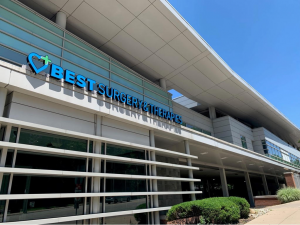Hammer Toe
Hammertoe is a deformity in one of the toes in which the toe is bent at the middle joint. Conditions such as hammertoe can be a source of discomfort, pain, and mobility problems. Typically, hammertoes can be treated with conservative treatment options, but if left untreated for an extended period of time, surgery may be the only option.
If you are experiencing pain in your toes, specifically in your second, third, or fourth toe, allow this information to guide you in making the decisions necessary for recovery.
Causes
Hammertoe develops due to muscle imbalances in the toe which put pressure on toe joints and tendons. If a toe is bent or out of place for long enough, the toe joints and the muscle group will tighten. This displacement can cause extreme pain and discomfort.
If you are experiencing foot pain and are interested in seeking a diagnosis or treatment, our skilled professionals at BEST Health System are passionate about helping you find the most effective approach to finding recovery.
Some of the factors that may increase an individual’s chance of developing a hammertoe or a similar condition include:
- Genes: Some individuals are born with certain features that make them more likely to develop this condition.
- Injury or trauma: An injury to the toe can result in hammertoe if the collision displaces the joint.
- Narrow shoes: Ill-fitting shoes with minimal support can cause an individual to develop a foot condition such as hammertoe.
Treatment
If hammertoe is noticed in the early stages, it is likely that conservative treatment options can repair the damaged joint. It is important that the patient carefully follows their treatment plan at all times if they want to see sufficient results. Some conservative treatment options that may be recommended by a doctor include:
- Avoiding narrow shoes
- Shoe inserts
- Anti-inflammatory medications
- Anti-inflammatory injections
- Exercise
- Physical therapy
If conservative treatment options have been exhausted, and the patient feels no relief, they may be a candidate for surgery. One of the most common surgical procedures to treat hammertoe is known as arthroplasty. This procedure involves the surgeon accessing the affected toe to remove bone and/or connective tissue to straighten the joint. This surgery may be performed in different variations depending on the location and severity of the joint damage.
Symptoms
The symptoms of hammertoe are hard to control, as they seem to flare up when the individual is wearing shoes. Common symptoms relating to hammertoe include:
- Swelling
- Difficulty walking
- Redness
- Discomfort when moving toes
If your symptoms are severe, it is recommended that you seek medical guidance to ensure your condition does not worsen.
Reach out to BEST Health System
If you are experiencing the painful effects of hammertoe, contact our office and get in touch with our skilled team of medical professionals.
Related Articles
A Map of BEST Health System's Ohio Locations
BEST – The Health System Redefining Care Throughout Ohio BEST Health System is a modern healthcare system with accessible locations throughout the state of Ohio. […]
5 Things You Didn't Know about Joint Care
Joint pain can be caused by a number of different conditions, the most prevalent being arthritis. If it is severe it can keep your day-to-day […]
Four Treatment Options for Tarsal Tunnel Syndrome | BEST
Similar to carpal tunnel syndrome in the wrists, tarsal tunnel syndrome is a condition that can cause severe ankle pain for those affected. The tarsal […]
Five Treatment Options to Help with any Type of Tendonitis
Tendonitis, also spelled tendinitis, is an injury caused by inflammation and damage to tendons. In the body, tendons are tough flexible pieces of cartilage that […]



